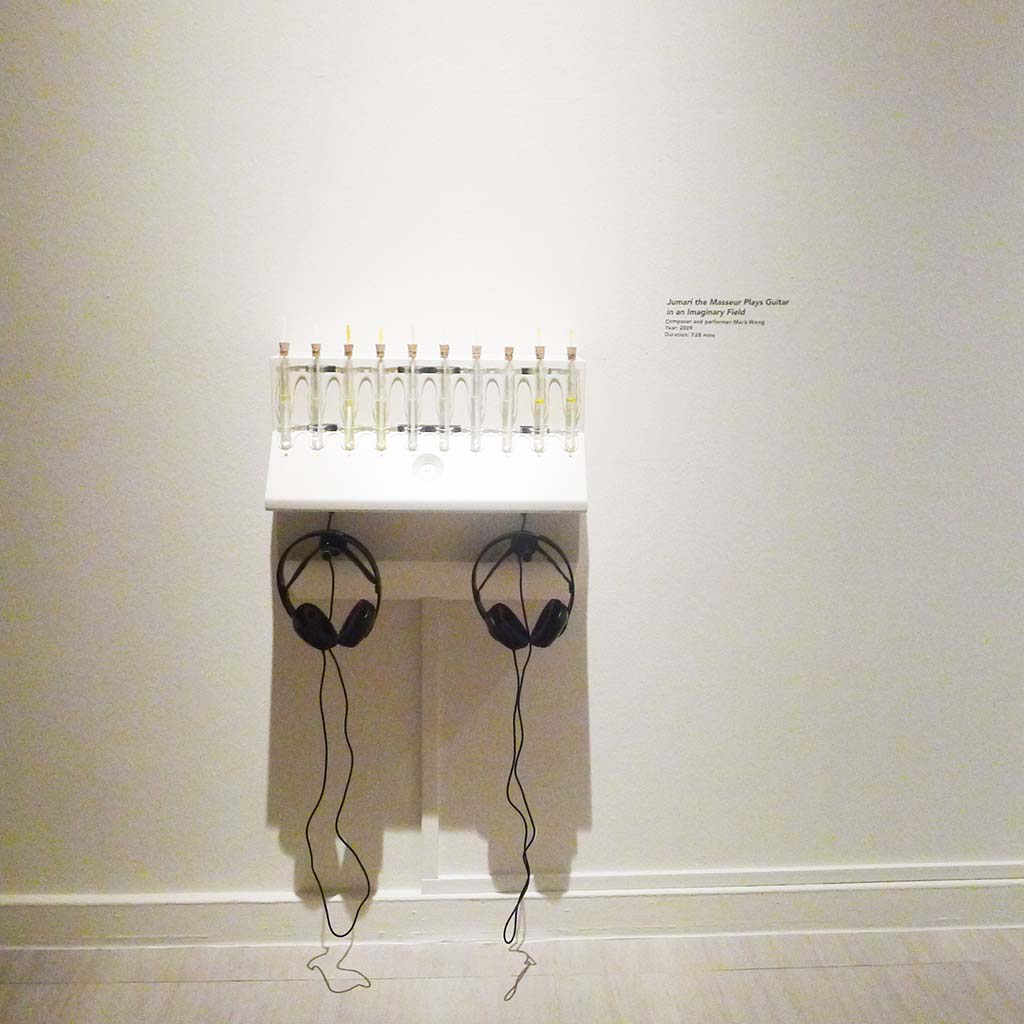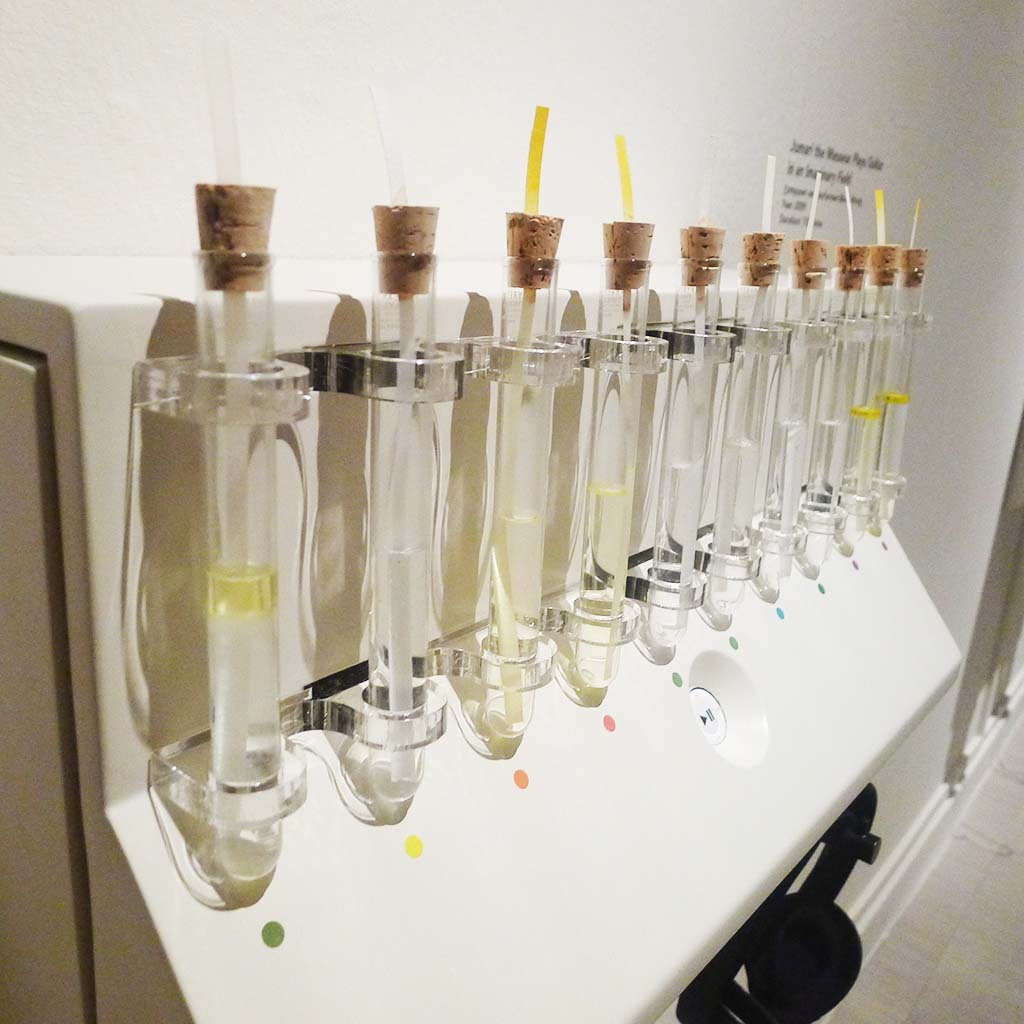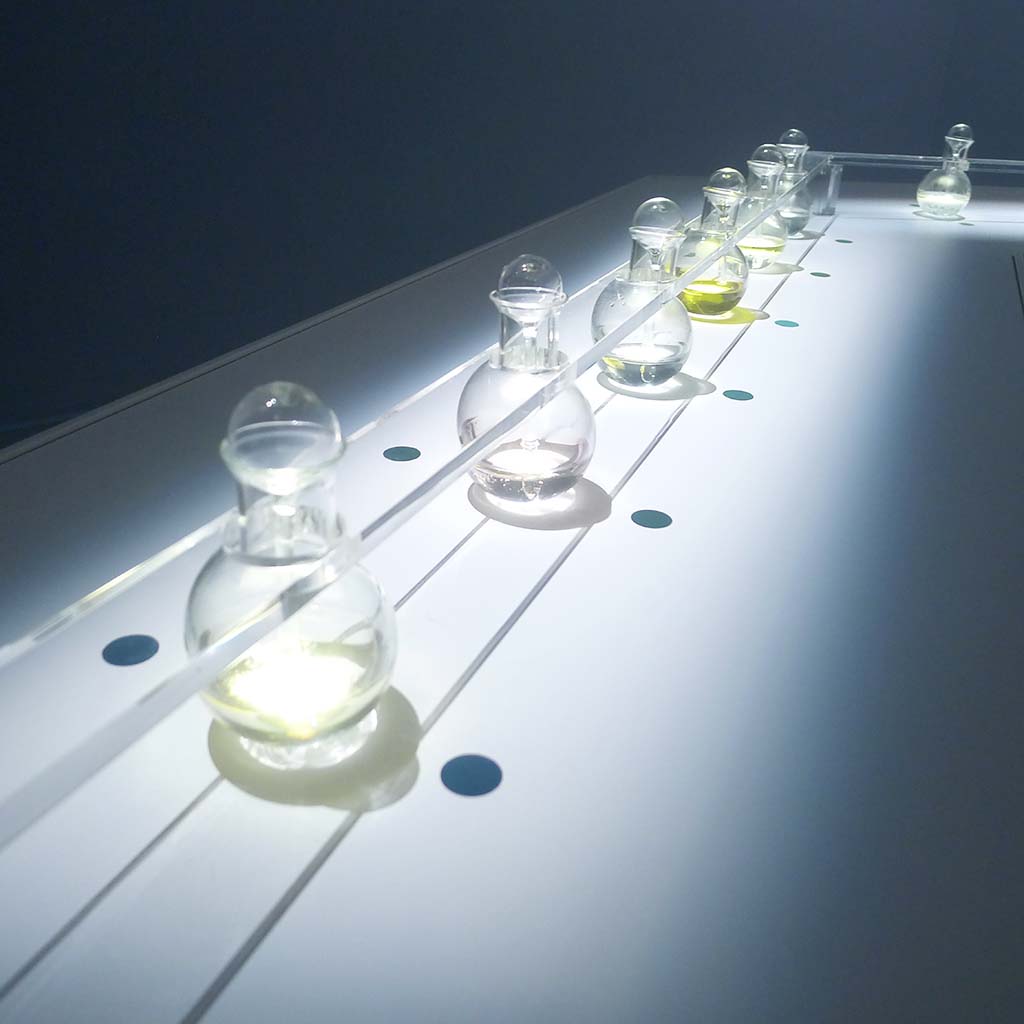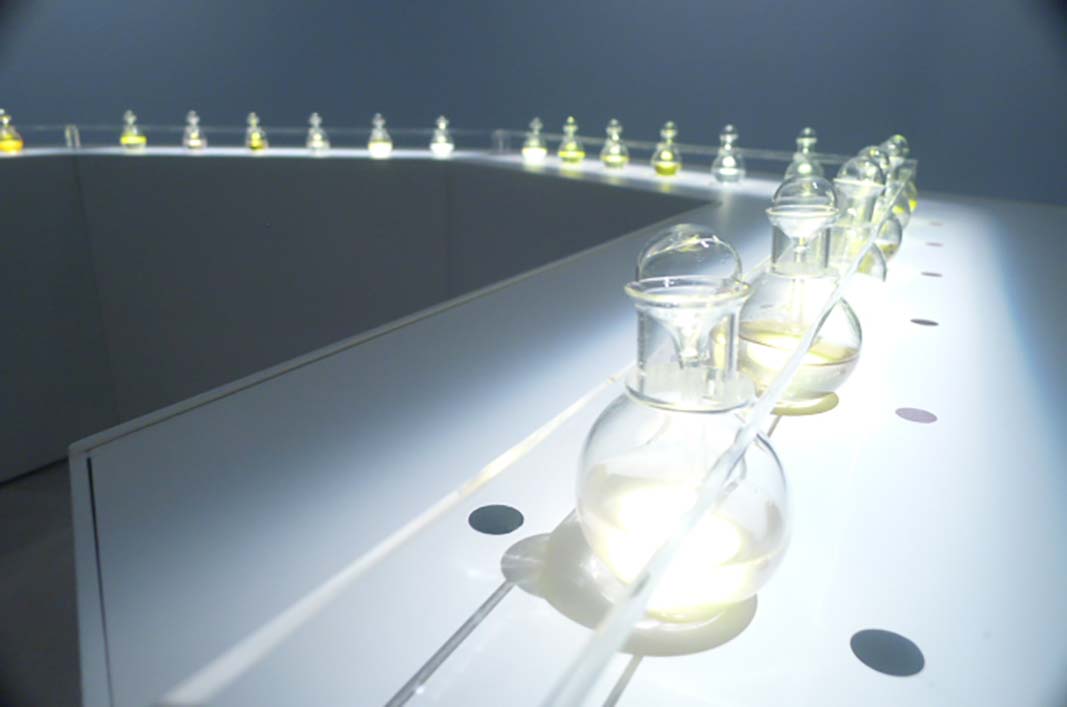May Puno sa Dibdib ng Kamatayan




Medium: Glass, Scent, Music
Interactive installation with perfume and sound
Installation dimensions variable
Collection of the Artist
Singapore Art Museum commission
Description: An exploration of the phenomenon of synesthesia wherein four musical compositions are translated into scent notes. The glass bottles are installed within a taxonomy of color to form and interactive chart based on Septimus Piesse’s 18th-century writings on perfumery and sound. The selection and pairing of sound to a scent and scent to color is based on the phenomenology of synesthesia, a chemical condition in the brain that crosses the perception of the senses. The notes in this piece combine into chords of scent that the viewers can experience through the 30 perfumes and through the music that is installed in a separate room.
Apprehending the world through sense perception often calls upon our senses to work in multiplicity and synchronicity. On certain occasions, sense data may even cross into one another, and May Puno sa DIbdib ng Kamatayan explores the phenomenon of synesthesia, in which one sense is received or perceived via another sense. A neurological condition that affects a small percentage of people (synesthetes) and manifests in differing forms, synesthesia has also long been a source of creative experimentation and investigation by artists, writers and musicians.
May Puno sa Dibdib ng Kamatayan examines the idea of ‘composition’ as expressed – and experienced – across two senses: that of smell and sound. Despite having no immediate obvious affinity, the olfactory and audio senses employ some similar terminology and language: musical scores and perfumes are described as comprising of high, middle and low notes, where notes are also further structured in chords or accords; moreover, both song and scent are powerful triggers in conjuring feelings and memories. Amongst the senses, smell is especially potent in eliciting emotional memory because the olfactory bulb is intimately linked to the brain’s amygdala and hippocampus, which govern emotion and associative learning respectively.
Here, Goldie Poblador has selected key songs and musical arrangements that hold deep personal and emotional resonance for her, and in certain instances, also collaborated with the musicians. Through the process, she translated sonic notes into olfactory ones, creating scent compositions that synesthetically respond to their musical sources. In the adjoining room, a ‘keyboard’ or ‘palette’ of 30 perfume notes allows visitors to recreate the four scent compositions, or even improvise their own olfactory creations in accordance with their personal choice of song.

